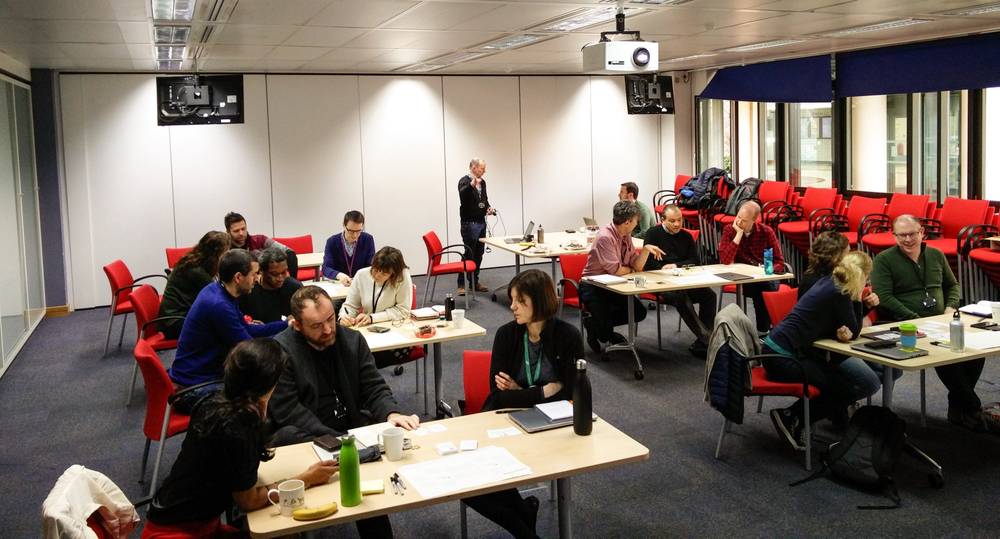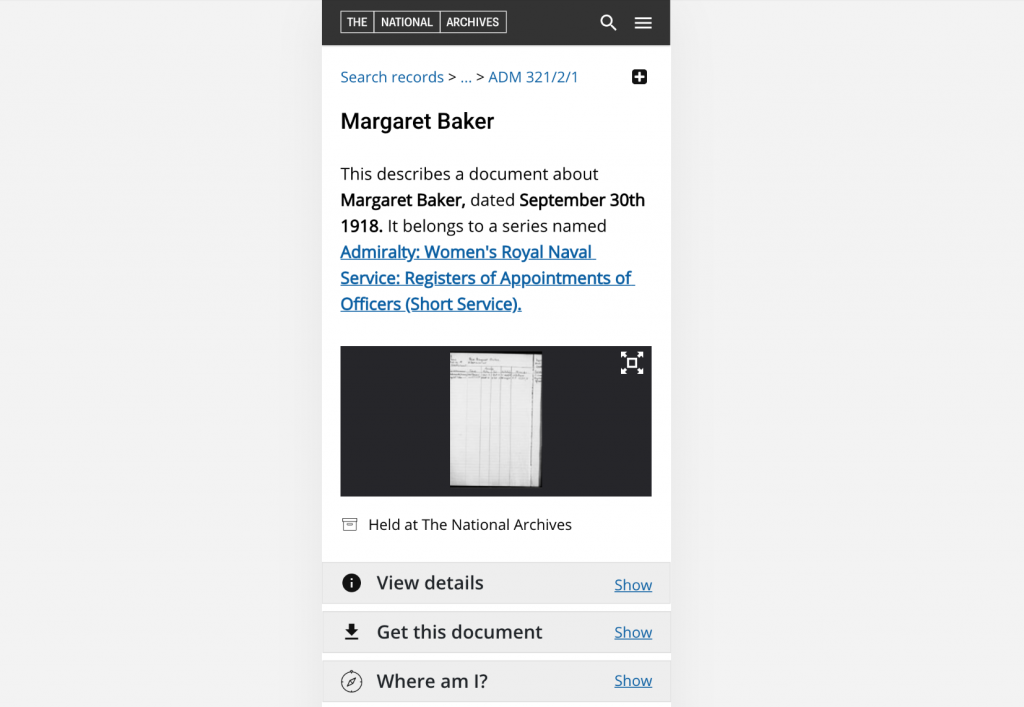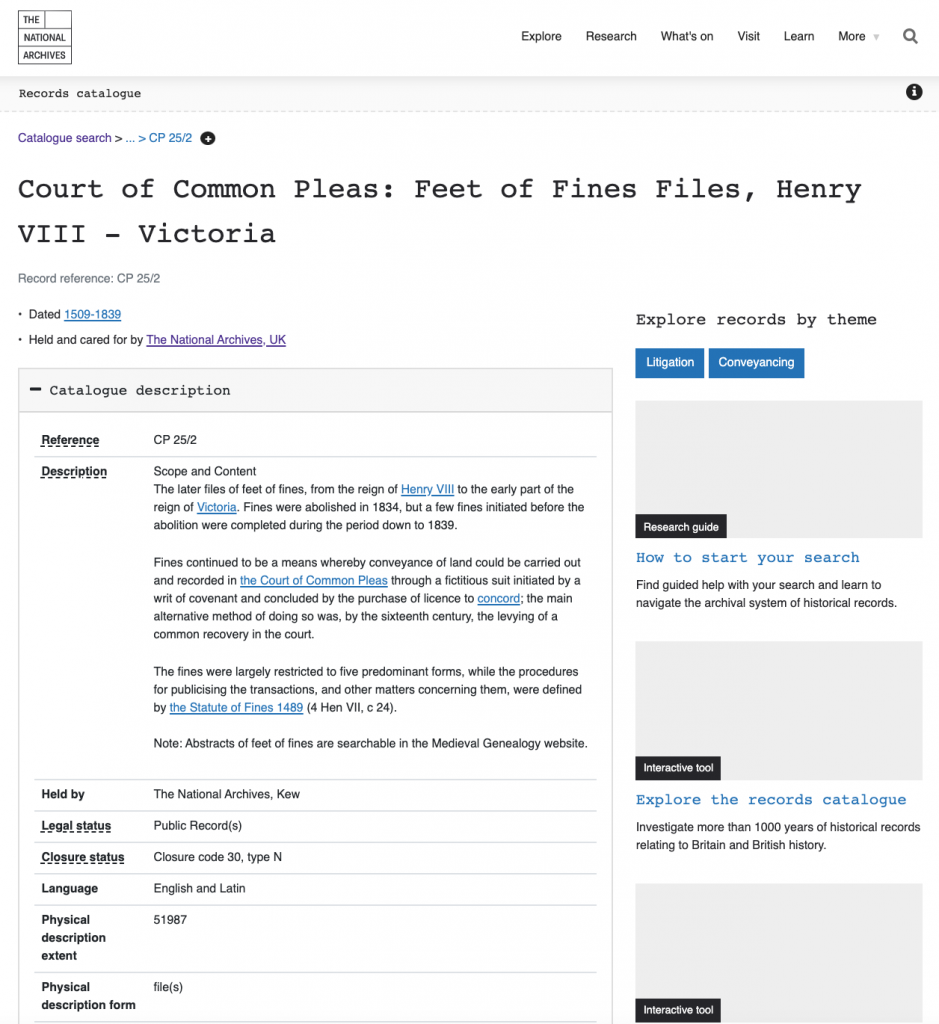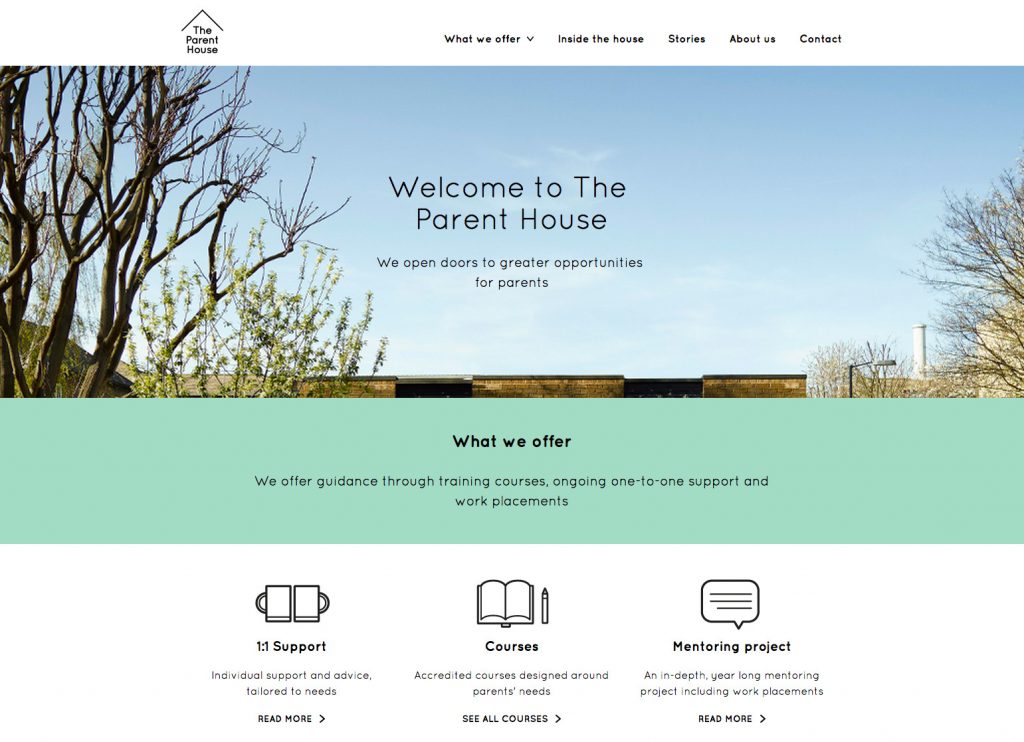The National Archives team believe that archives are for everyone. But with 34 million record descriptions available, incomplete and inconsistent metadata, and the difficulty most people have with the mental model for finding something in the archives it can be easy for people to feel overwhelmed.
Highlights
15 Prototypes
GDS alpha guidelines
Live usability testing with members of the public
Graph-based information retrieval
What could be better ways to explore the online National Archives?
We began with an onboarding phase for everyone on the project, and then ran a series of Design Thinking workshops with a broad range of stakeholders to reimagine how, through understanding user needs, the broader public might find new and better ways or reasons to experience the online catalogue.

At the same time I was immersing myself in the domain and background to the world of online archives, reading existing user research and reviewing emerging strategies being used around the world to solve similar problems. My goal there was to better understand a wicked problem, and then give a presentation outlining where other organisation were showing good examples of making the discovery of material in archives a good experience.
Ideation and prototypes
Next we ran a mixture of ideation sessions, API building, prototypes, content workshops and user testing to produce a wide range of ideas we could test with the public.
We made 15 prototypes, and they have been user tested with a limited audience due to the Covid-19 pandemic. They used a mixture of different navigation, search and visualisation techniques, combined with our engineers experimenting with a graph-based approach to retrieving relevant information.

Part of the approach was to think about really innovative and engaging ways to discover and understand what there is in the archives. The other part was to look at how to improve the search and browse experience by redesigning the Information Architecture and the User Interface so that users would be less baffled by the information they were seeing. How do you not overwhelm the non-expert user straight away? What are they most interested in seeing as a first-time visitor?

How records are presented
The part I had most involvment in was thinking about the existing journeys and the way that catalogue information is presented to users. Most people will hit an actual record straight from a search engine result, and will often bounce. This is often just not what they were looking for as material, but also they will not understand what they are looking at and where they have landed. Particularly in our case as we focused on non-expert and first-time users. A classic Information Architecture problem!
Priority Content Guides
I suggested that we do a priority guides exercise with a broad range of people from the archives to get some ideas on what information our users will most care about and new formats or bits of information we could bring into our records.

Based on that I iterated on wireframes that showed a clearer and less overwhelming set of information. We thought about ways in which we could plug gaps in the descriptions for points in the catalogue, perhaps to give them a more human introduction. I thought about how to bring progressive disclosure into the user experience, and to resurface more imagery where it was available. What supporting content might help novices?
I started with a mobile-first approach so we didn’t get too hung up on layouts on larger screens. I checked with SMEs to validate what key pieces of information a user might be able to pick up the scent of information. We user tested to see if target users understood the new format.

In the end we managed to iterate some responsive views, and we plugged them into our data prototype, where we could really test some journeys with real data.

You can see all the prototypes on the Alpha homepage.
Lessons for beta
- Engaging the organisation as an embedded team is essential
- Blank sheets need to have a focused strategy written onto them
- Pandemics disrupt your user testing strategy
- Having a content strategist is essential
- Testing innovative interactions needs higher fidelity
- Involving a wide range of experts in your design process is invaluable
More case studies

The Parent House
UX discovery and workshops to align a charity website with its services and community.



